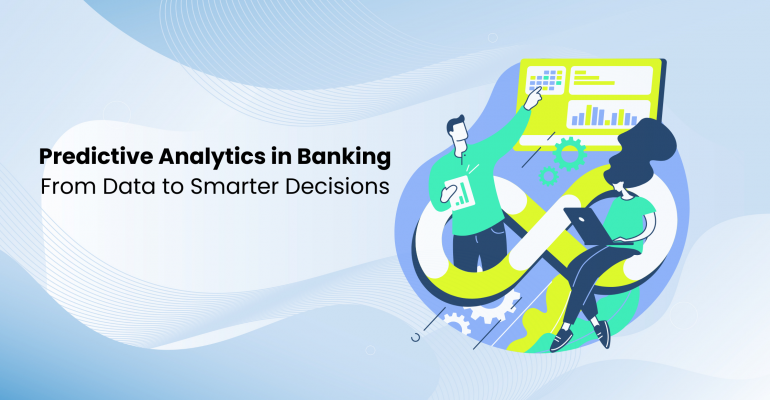Predictive Analytics in Banking: From Data to Smarter Decisions

Predictive Analytics in Banking: From Data to Smarter Decisions
In today’s digital-first financial landscape, data has become one of the most valuable assets banks can leverage. However, raw information alone doesn’t create value—it’s the ability to analyze, interpret, and anticipate what comes next that drives real impact. This is where predictive analytics in banking plays a transformative role. By applying advanced statistical models, machine learning, and AI-driven tools, financial institutions are moving from reactive strategies to proactive, data-driven decision-making.
What is Predictive Analytics in Banking?
Predictive analytics is the use of data, statistical algorithms, and machine learning techniques to identify the likelihood of future outcomes based on historical data. Unlike traditional analysis, which explains what has already happened, predictive analytics anticipates what is likely to occur.
In the banking industry, this means shifting from analyzing past transactions to forecasting customer behaviors, credit risks, and even potential fraud before it happens.
Key Applications of Predictive Analytics in Modern Banking
Fraud Detection and Risk Management
Financial crime continues to evolve, but predictive analytics allows banks to detect anomalies in real time. By analyzing transaction patterns, banks can spot unusual behaviors that may indicate fraud or money laundering. Similarly, predictive scoring models help identify customers with higher credit default risks, allowing for smarter lending decisions.
Personalized Customer Experiences
Modern customers expect more than generic services. Predictive analytics empowers banks to deliver tailored recommendations—whether it’s offering the right credit card, loan product, or investment plan—at the right time. This personalization not only improves customer satisfaction but also strengthens loyalty.
Operational Efficiency
Banks can also use predictive insights to optimize internal processes. From forecasting cash flow requirements across branches to anticipating peak customer service hours, predictive models help financial institutions allocate resources more effectively, reducing costs while improving customer service.
Benefits of Predictive Analytics for Financial Institutions
Adopting predictive analytics in banking offers significant advantages:
-
Better risk management through proactive fraud detection and credit assessment.
-
Improved regulatory compliance with data-driven monitoring and reporting.
-
Increased profitability by aligning offers with customer needs.
-
Competitive advantage in a rapidly digitizing financial ecosystem.
Challenges and Considerations
While the benefits are clear, implementing predictive analytics in banking requires careful planning. Banks must address:
-
Data privacy and security to protect sensitive customer information.
-
Integration with legacy systems, which may not support modern AI-driven tools.
-
Talent gaps, as skilled data professionals are essential to maximize predictive models.
The Future of Predictive Analytics in Banking
The future is moving toward hyper-personalization and real-time decision-making powered by AI and machine learning. As predictive analytics becomes more sophisticated, banks will be able to anticipate customer needs before they arise, detect fraud the moment it occurs, and create seamless digital experiences that rival fintech competitors.
Conclusion
Predictive analytics in banking is no longer just a trend—it’s a necessity for institutions seeking to remain competitive in an increasingly digital world. By transforming raw data into actionable insights, banks can make smarter decisions, mitigate risks, and create personalized experiences that customers truly value.
👉 At Onephase, we help financial institutions harness the power of predictive analytics and AI to drive digital transformation and future-proof their services.

